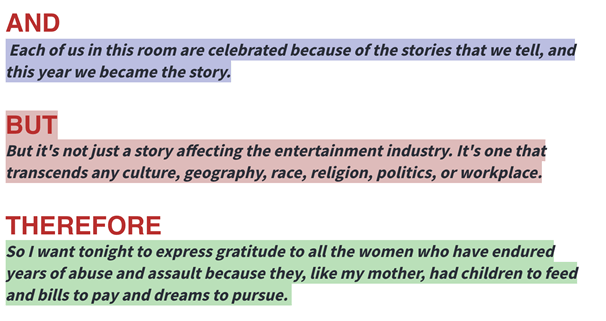3 authentic storytelling tips when you’re in a jam
Ragan Training experts deliver tactics to help you succeed. Here are several storytelling tips, shared by Communicate4Impact President Douglass Hatcher in a recent session titled “Authentic Storytelling.”

Authentic storytelling brings speeches, blog posts and videos to life and moves audiences by touching their hearts. Here are three tips to help you create stronger content when you’re stuck:
1. Remember structure is in our DNA. “It might seem like structure takes the creativity out of what you’re writing—and that it’s not quite ‘authentic,’” said Douglass Hatcher, president of Commjnicate4Impact in the recent Ragan “Speechwriting & Public Affairs Conference.”
But the truth is the opposite. “The impulse to create order out of disorder is fundamentally human—it’s in our DNA,” Hatcher said. “When it comes to storytelling, we can’t not not do it.”
To illustrate, he cited a 1944 experiment run at Smith College by Heider and Simmel where an animation of geometric shapes was shown to students. When asked what they saw, students told stories rather than describing the movements of shapes.
Hatcher explained that when there is “No clear story structure, our minds will create one—so be sure to include a beginning, middle and end in whatever you’re working on.”
2. Try the “And-But-Therefore” story hack. “This is a pretty simple idea to quickly plot anything you’re working on using the key words ‘but’ and ‘therefore’—even if it’s a speech” Hatcher said.
He adapted the hack from Randy Olson and his book “Houston, We Have a Narrative.” Olson, in turn, took the lesson from “South Park” writers Matt Stone and Trey Parker.
To illustrate how it works, Hatcher shared a clip from Oprah’s Cecil B. DeMille Award Acceptance Speech in 2018. Here’s a text excerpt of the key transitions in her speech:

Hatcher also offered an example of how to use ABT structure in a speech you might be writing about the 25th anniversary for a company:
- AND: Today we celebrate 25 years since the inception of the “widget company”… it’s been an extraordinary ride…
- BUT: I want us to remember the values that got us here…
- THEREFORE (SO): I want our faith in each other, XYZ values, to remain as we face the future…
Why does this work? “It’s really just a simplified version of a story arc,” Hatcher said.
3. Don’t overlook the power of “setting.” Every story has a setting, a time and a place where events occur. Setting can establish tone, elevate drama and ground stories in the real world.
“This is key to creating a sense of authenticity,” Hatcher said. It’s also why he encouraged writers to take the time to establish setting whenever possible—even in speeches.
For example, Oprah’s speech started with a personal story that created a “dramatic intimacy that allowed the audience to soar with her,” according to Hatcher.
Her speech begins: “In 1964, I was a little girl…”
“It can’t get any simpler and more authentic than that,” Hatcher said.
Learn more about storytelling in Ragan’s March 31 “Storytelling in Uncertain Times” workshop, featuring speakers from Microsoft and other top brands. Brian Pittman is the Dean of Ragan Training and a Ragan Communications event producer.







